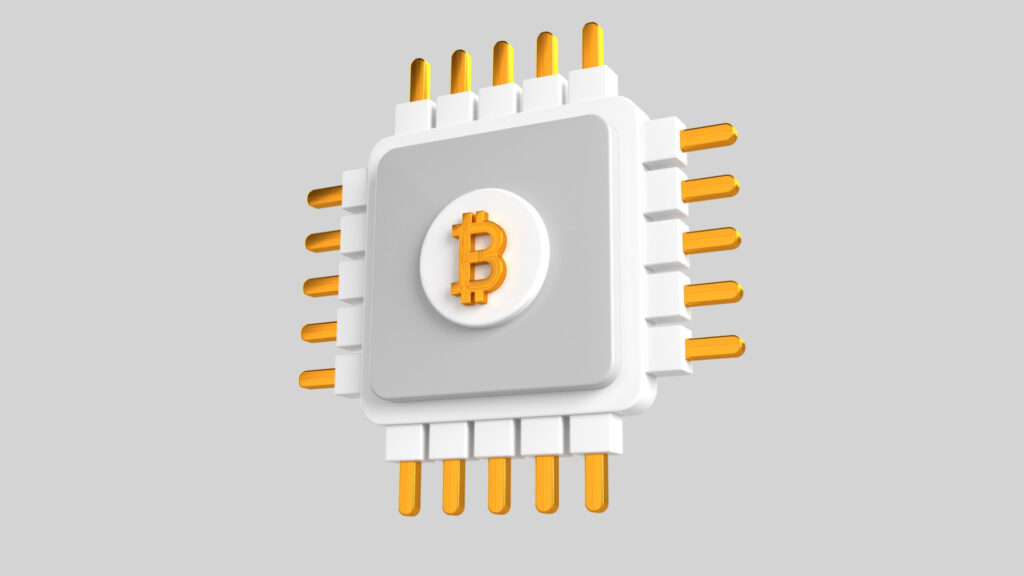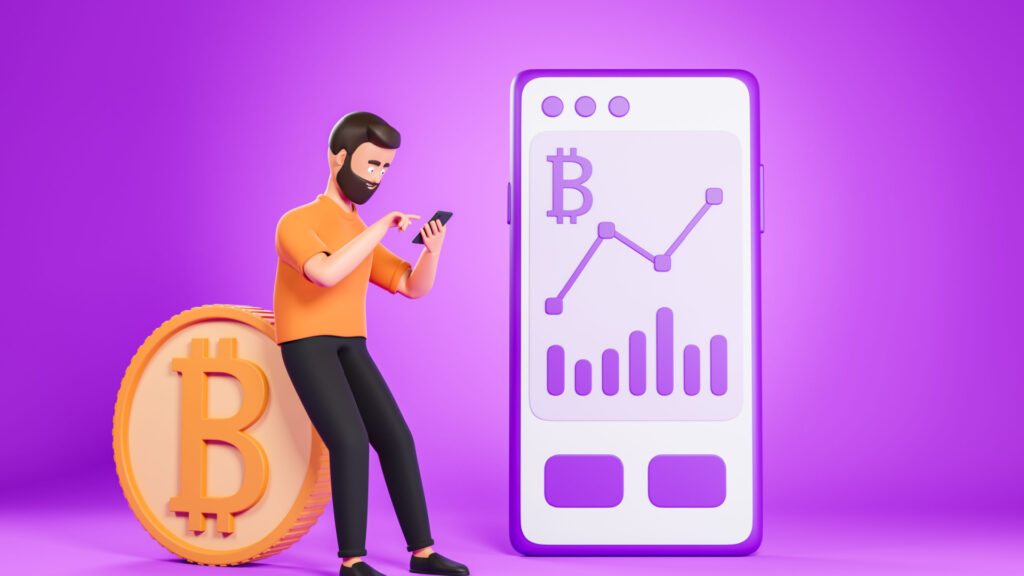What is a mining pool?
A mining pool is an association or a group of cryptocurrency miners. This group combines their technological capabilities and computing resources to find blocks faster, increase the probability of finding a block in general, and mine cryptocurrency as a reward for finding a block. Crypto mining pools share profits among their participants, but not equally: there are various ways to split the received currency. We will discuss them later in the article.
The definition of cryptocurrency mining pools first appeared in 2010. Then one of the users of the BTC forum founded the world's first Bitcoin mining pool, called Slush Pool or Bitcoin.cz Mining (yes, the user was from the Czech Republic). Since then, mining pools as a phenomenon have taken over the world, and it has become almost impossible to mine Bitcoin without participating in a mining pool. Now Bitcoin mining is divided between 10-15 top mining pools, using gigantic capacities and constantly attracting more and more new participants. About four million machines, that is, computers with the necessary characteristics for mining, are involved in pools worldwide. Mining software is quite expensive, so this figure surprises even seasoned crypto enthusiasts.
How does the mining pool work?

Crypto mining that works on the Proof-of-Work algorithm consists of two directions: the cryptocurrency can be issued by the issuing company to the market, or it can be transferred for verifying transactions and adding them to the public blockchain. Bitcoin, for example, uses mining rather than controlled issuance of coins. You can mine it only through a computer that is connected to the Internet. The computer must have special programmes to control the mining process installed, and its power must allow it to perform complex calculations. You need to perform them to find the block hash, a special combination of characters that identifies a set of transactions. You need to do this “manually”, through a simple selection of values; there are no formulas to make searching easier.
Mining pools make it more difficult to mine cryptocurrencies because the level of complexity of the tasks computers face increases if several users work on them. This mechanism also works in the opposite direction: if only one user is searching for a block, the tasks will be simple, but still hard enough only for a PC to solve.
How does the mining pool work? You join the group, get access to the sharing of computing power, add your computer and just start mining. The amount of power you provide is recorded, and this data is often used to determine the amount of the reward. Mining pool fees vary from pool to pool, but they are not mandatory. The pool can ask for them, or it can refuse them. Many pools allow you to receive funds for the work for free. Usually, the fee (if any) does not exceed three per cent of the payment you receive.
You can participate in a mining pool with two job options: either perform one task and wait for the next assignment or freely choose the number of tasks you are willing to take. You won't get any reward if you complete a task but submit it too late. In this case, the result of your work will be called the rejected share. Each member of even the best mining pool has rejected shares. Not all calculations lead to block detection, which explains why the shares are rejected. At the same time, there are accepted shares — these are the results of work that are accepted as a significant contribution to the discovery of the block. Owners of accepted shares receive a reward.
How are the rewards for participating in a mining pool distributed?
There are several types of rewards, most commonly listed in mining pool stats.
- PPS, pay-per-share. If the share is accepted, you receive a payment that you can immediately withdraw from your account (pool balance). If it is rejected, you keep working.
- PROP, proportional. The payment corresponds to the amount of computing power that you have provided to the pool and that the pool has used.
- SMPPS, Shared Maximum Pay Per Shares. The payout is similar to PPS but is limited to the maximum amount earned by the pool for the current “transaction” (search for a specific block).
- ESMPPS, Equalized Shared Maximum Pay Per Share. This is the same as SMPPS, but the payments are evenly distributed among all miners in the pool.
- SOLO, or single mode. Running a node and connecting power to it is not an easy task. Therefore, miners who have already bought or rented large capacities often connect to mining pools so as not to run a node on their own. They pay a certain percentage for this.
- PPLNS, pay-per-last-N-shares. No fixed amount is paid per share. Your shares are subject to a reduction factor that varies depending on the number of shares. After you have the number of shares designated by the pool, you will be paid for them in full. Until then, the payment will be slightly reduced. This approach excludes pool hopping and motivates users to cooperate with the pool for the long term.
- PPS+, a combination of the PPS and PPLNS methods. The block reward is distributed according to PPS, and the fees included in the block are calculated according to PPLNS. Modern pools quite rarely use this method.
- RSMPPS, Recent Shared Maximum Pay Per Share. This is a modification of SMPPS: the extra income payment is prioritised depending on whether the user is new to the pool or not.
- CPPSRB, Capped Pay Per Share with Recent Backpay. This payout is similar to ESMPPS, but here the cost of a share is automatically calculated at the maximum limit, and each new block is recalculated. Mining pools generally do not like this method much.
- FPPS, Full pay-per-share. It’s the same as PPS+, but user transaction fees already included in the block are paid on a PPS basis rather than PPLNS.
- HBPPS, Hour-Based Pay Per Share. Payment is carried out according to the PROP method, while the period for calculating the proportional contribution of miners is not how long the block has been in the network, but one hour.
- RBPPS, Round-Based Pay Per Share. The calculation is the same as with HBPPS, but the calculation time is changed to a block search round instead of an hour.
- PPSW, the average award for N number of blocks. You will be paid for the average number of problem solutions submitted over the last N blocks. However, you will have to wait for the first payout for quite a long time.
- POT, Pay on Target. This is a modification of the PPS which takes into account the change in the cost of each share for each miner, depending on the solutions that the miner provides.
- BPM, Bitcoin Pooled mining. The earlier shares are worth less than the shares miners got closest to the time the block hash was found.
- Puddinpop. The technique is suitable for working with remote miners who send, for example, a chain of hashes to the pool. They receive a reward for this.
- Eligius. This method combines BPM and PPS. You will only be paid when a new block is discovered, but the share will cost the same as the previous time.
- Geometric. The technique is a bit like BPM, only the share value is revalued at the beginning of a new round and does not change until a block is found.
- DGM, Double Geometric Method. It’s a combination of the Geometric technique and PPLNS. If the round is short and the block is found quickly, the pool owner can take a part of the pool profit and pay the miners the value of their shares during the long search for a new block.
- Triplemining. New pools commonly use this method. The fee (about 1%) goes as a reward for the miner who finds the block.
- Score. This reward system varies from pool to pool. It can be anything: it can require a high indicator of mining pool liquidity, that is, “free” money, or it can include a combination of several payment methods.
Pros and cons of crypto mining pools

What are the advantages and disadvantages of mining pools that mine Bitcoin or altcoins?
Pros
- Stable income. Of course, it depends on which pool you choose to work with, but usually, the income is stable, since it is easier for a large group of miners to find the block hash than for one user. This means that there will always be work.
- Lower entry threshold. Since there are several participants in the pool, you do not need to buy expensive equipment or rent capacity. The combined specs make up for your lack of the latest mining hardware. The investments that you can make to buy new equipment for the pool are divided among all participants.
- Quick hash search. The more powerful the hardware, the higher the hash rate (the number of hash values a computer generates per second). The hash rate can reach very high, which positively affects the speed of finding a new block.
Cons
- The reward is divided among the participants. Sometimes major miners (users with a large amount of tech capacity) take over the management of the pool. Consequently, they receive increased rewards and may decide not to cooperate with other miners.
- Fees. To join the most profitable mining pool, you will either need to pay an entry fee or pay a certain percentage of each reward. In the case of fees, you can either receive an increased reward or more benefits and “premium” opportunities (this primarily applies to serving you as part of the pool).
- Fraud. Unfortunately, mining pools face it too. Some users may create pools to trick you, get your money (profit after block discovery) and disappear. Therefore, we advise you to carefully study the mining pool before joining it — fortunately, there are dozens of websites with pool descriptions. Another type of fraud is hiding the found blocks from the main blockchain. This is a miner’s fault rather than a pool’s. In this case, miners use the shared computing power but do not share their profits with anyone. This behaviour adds confusion to the blockchain and slows down the pool operation.
Types of crypto mining pools

What types of mining pools are there? No, we are not talking about the Ethereum mining pool or the Dogecoin mining pool — all currencies running on the PoW algorithm have their own mining pools.
Proportional pools. Miners from such pools receive shares until they find a new block. Only then can they expect to receive a reward, the amount of which depends on the share of the solution they own in this pool. The shares must be accepted.
Pay-per-share pools. It’s practically the same here, except miners can get their share payment regardless of whether a new block is found or not. The payment — the exchange of the accepted share for BTC, ETH and so on — can occur at any time. Even if the pool didn't find anything.
Cloud pools. In such pools, miners simply rent computing power without buying it themselves. They pay for the hash rate, that is, the number of hashes that the computer “mines” per second, and not for the software itself. The contract is most often concluded for 6–12 months. If the electricity in your country is quite expensive, this may be a good way out.
Mining farms. A mining farm is a mining pool that has the funds to buy a large amount of equipment and locate it in one place. This form of a mining pool is already becoming obsolete as fewer people use it. Instead, users use special applications such as multi mining pool.
How to join a mining pool
How do you join the mining pool and come up trumps?
Choose the type of pool you like best, find a list of the best pools of this type, and select one of them knowing how they pay for the job done. Then enter the exact address of the pool into the mining software, connect the wallet to receive payouts, set up the equipment for the mining pool and start working. You can change the pool by changing the address in the software. Yes, it is that simple, except for picking the most suitable pool. Learn the requirements for hardware — processors, computers, software — and the currency you can mine. This allows you to decide whether the pool suits you according to the most basic characteristics. You can narrow the list of pools by studying their transparency: is everything clear in how the pool works? Do you trust it? Can you track transactions? Monitor the actions of pool miners on special websites — they won’t show you the first and last name of each user, but you can assess whether these users may be fraudsters based on the randomness (or intention) of their actions. Consider the stability and lifetime of the pool, the fees it charges, and reviews, if it has any.
We do not recommend choosing pools that guarantee payouts or anonymous groups. No one can guarantee that you will earn millions of dollars mining in a particular pool. Unlimited hash power purchases and pools that make it impossible to check hash rate statistics are two more red flags you should avoid.
How to create a mining pool

Below we provide a brief description of how you create your mining pool. Before starting the mining pool, make sure that you have at least 20 GB of free hard disk space, your operating system is updated to at least Windows 10, you downloaded all servers, and the processor (for example, the ASIC you probably know of, which is used to mine bitcoins) allows you to provide a good hash rate.
- Create a user ID. Enter your personal information on the blockchain pool portal (you can find one by keywords in any search engine) and check that your password is different from all other passwords. It should not be the same as any other password in the crypto world, be it an exchange account or a wallet.
- Create a pool server. Then download and set up the new service, get an ID, save it, and log in. When logging in, use the data obtained in the previous step.
- Create a new server configuration file. Select the name of the currency you will be mining for the file and save it in the “Conf” extension.
- Customise your pool. Choose how you will make payments and set up a back-end system: explore options for sending notifications, running a web page, and so on. Open the WinSCP service and find the file you created in the previous step. Open it and complete the setup: enter your username, password and other data. After that, save the file.
- Accept the pool configuration. Open WinSCP, select the currency you want to mine and click Enable. Enter your details and payment protocol information, click Save and exit the configuration. After that, you can start mining!
Mining pool profitability
The profitability of a mining pool depends on your equipment, the number of users in the pool, and the protocol according to which you are paid for your work. You, as the owner, cannot calculate the profitability to the dollar before the launch of your pool. But as a miner choosing a pool, you can use profitability calculators that show how much one solution may be better than another one.